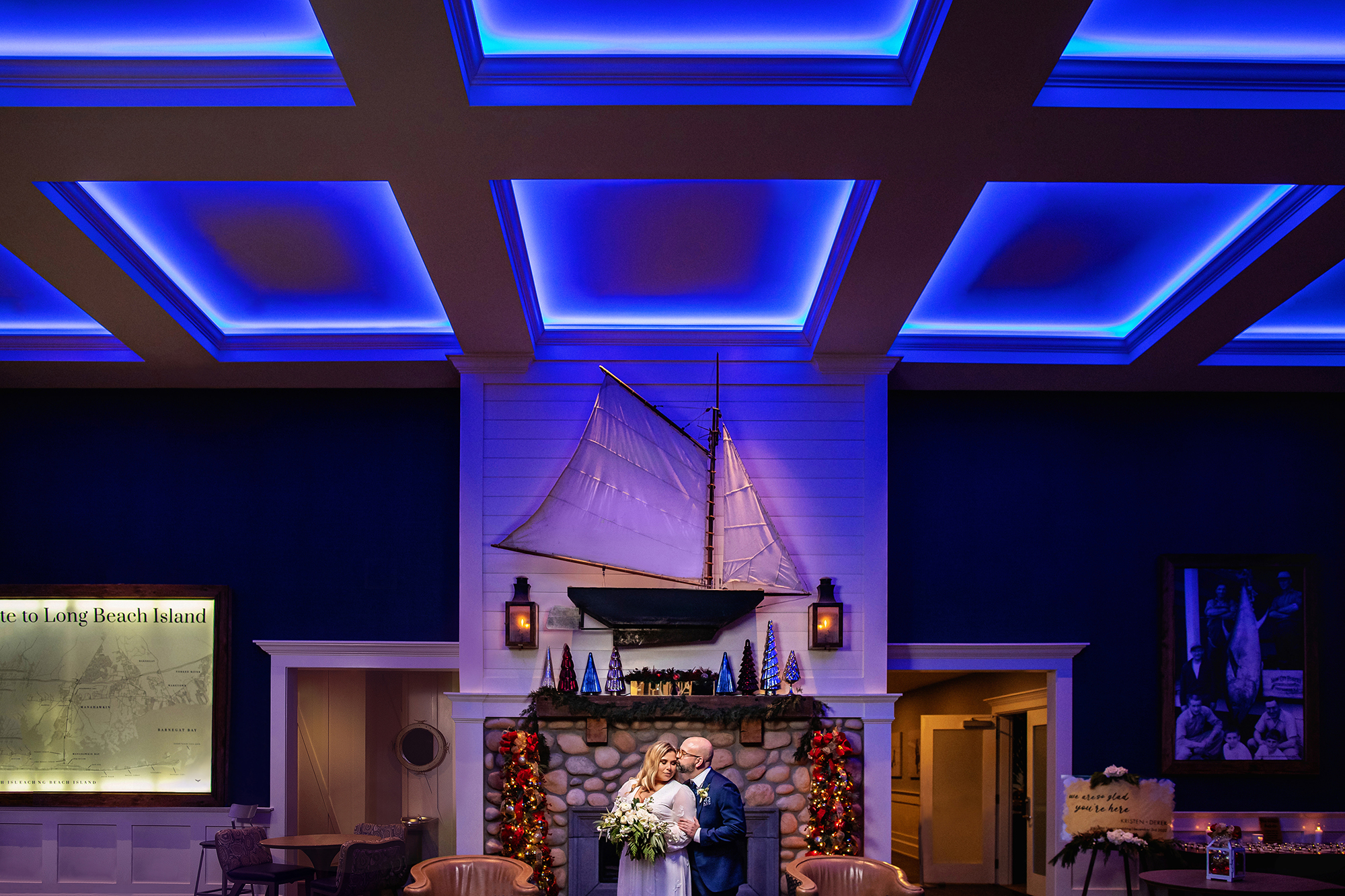Modifiers like softboxes and umbrellas serve as powerful tools for photographers to shape and control light. Whether they want to emulate natural window light with a touch of soft, diffused light or create an epic environmental portrait with darker exposures and higher flash powers, these tools provide portable and powerful means for photographers to bring their vision to life. In this article, we’ve gathered practical tips and techniques to help you effectively use softboxes and umbrellas to elevate the quality and mood of your wedding portraits.
All of the images in this article are provided by the photographers at Wedding Maps and used with their permission.
Softboxes Versus Umbrellas in Photography
So, for the uninitiated, what are softboxes and umbrellas, and how are they useful for modifying light for portraits?
In short, photographers use softboxes and umbrellas as light modifiers to transform an otherwise small light source, typically a speedlight or some other flash, into a larger, softer light source. However, while they both modify light similarly, there are distinct differences.
- Light Control: The main difference is that umbrellas tend to scatter light with minimal control, whereas softboxes provide more controlled, directional light.
- Shapes: Umbrellas are circular, while softboxes can come in a variety of shapes.
- Portability: Umbrellas are typically more portable due to their lighter weight and ability to fit inside a light stand bag. While some softboxes, like the Magbox, offer quicker and easier setup compared to other softboxes, umbrellas remain the fastest and simplest option to set up
Use Flash With Intention
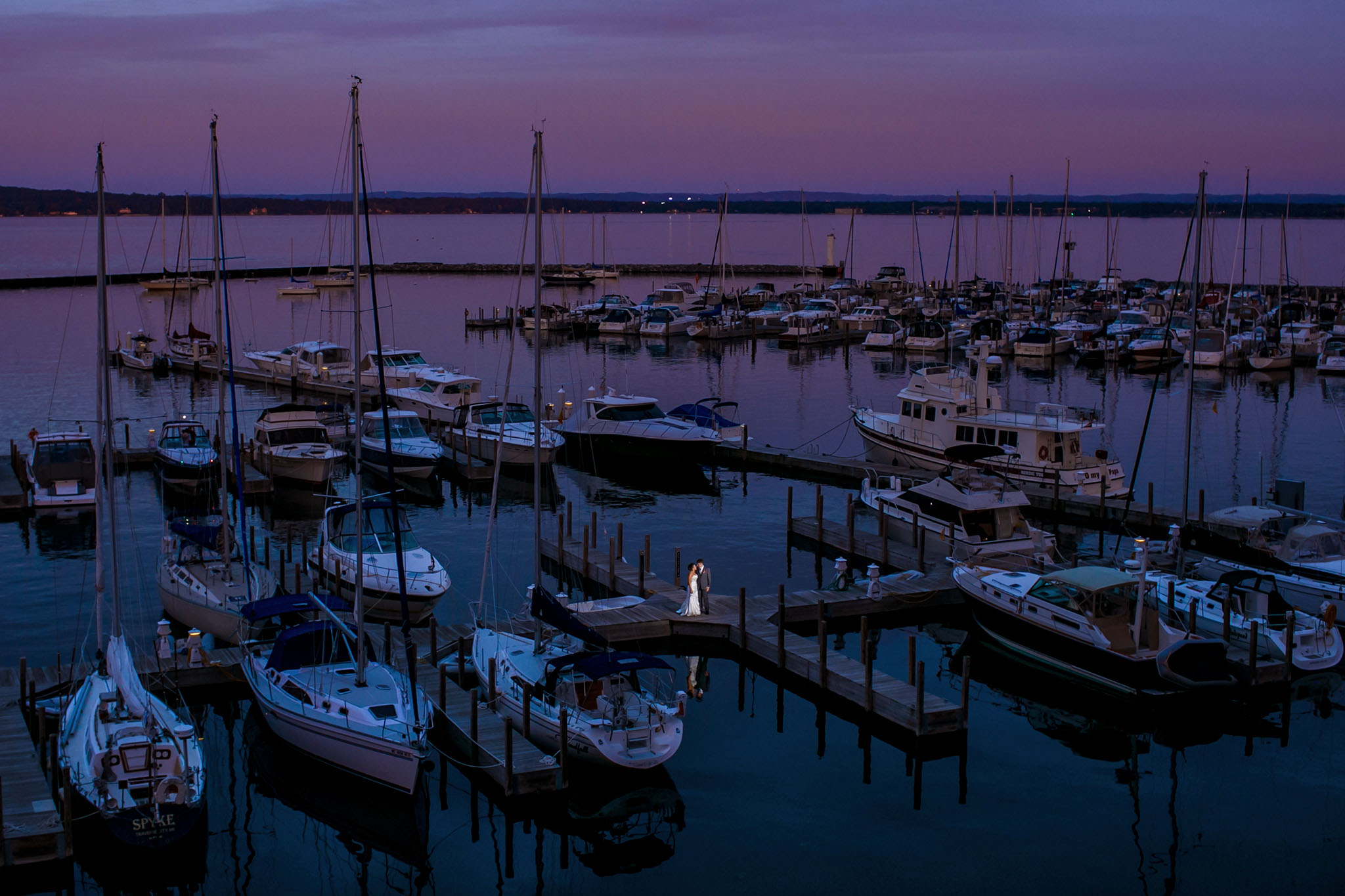
Photo by Milan lazic at Visions Weddings, Traverse City, United States
Before we dive into the world of using softboxes and umbrellas—or even flash photography in general—to photograph weddings, let’s talk about shooting with intention and not breaking out the flash and modifiers “just because.” Flash is typically meant to enhance a scene and make it better than it’d be without it. There are plenty of occasions, however, when natural lighting will win the day. Flash can provide photographers with a creative edge by allowing them to capture images that couldn’t exist otherwise, but sometimes the scene is already perfect as is. Of course, that’s not to say that you can’t inject your personal style into the shot whenever you choose, but choice is key here, and the results should reflect an image that you intended to create.
Enhance the Image With a Touch of Light
Striking the right balance between ambient light and flash can make or break your wedding portraits based on what you intended to capture. More flash power and less ambient lighting will yield more dramatic results, while just a touch of flash mixed with more ambient lighting will render a more “natural light” look.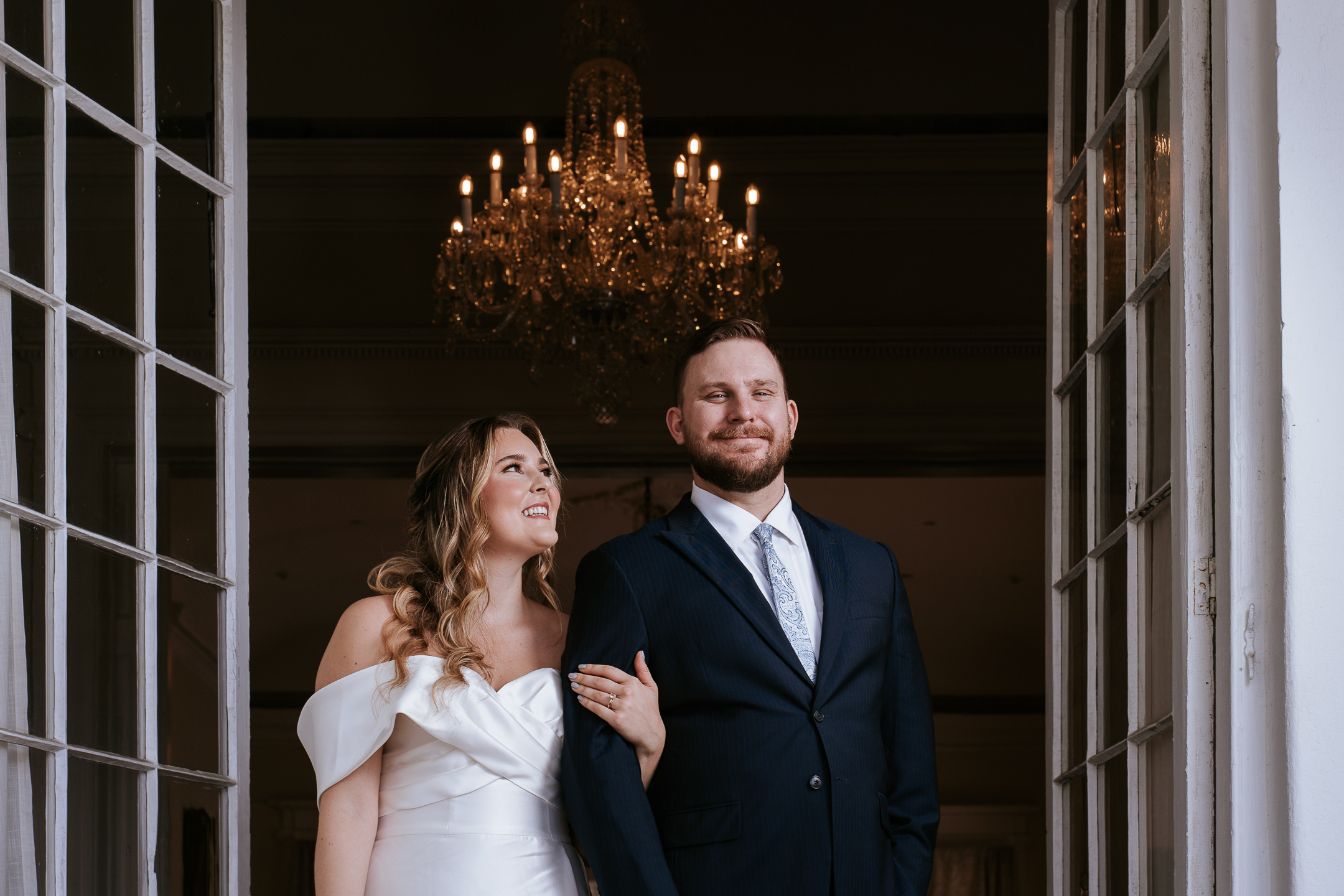
Photo by Hi Shutter Photography at Society Hall, Charleston, South Carolina, United States
When you want the lighting to look natural but the scene could use a boost, modifying the flash with an umbrella or softbox can smooth the transitions between shadows and light, giving you a soft, natural look. When taking this approach, it helps to position the flash off-camera at an angle in relation to the camera and your subjects, and to raise the flash so that it falls on the couple at a slight top-down angle for a more natural appearance. After all, that is the angle we’re used to seeing from natural sunlight.
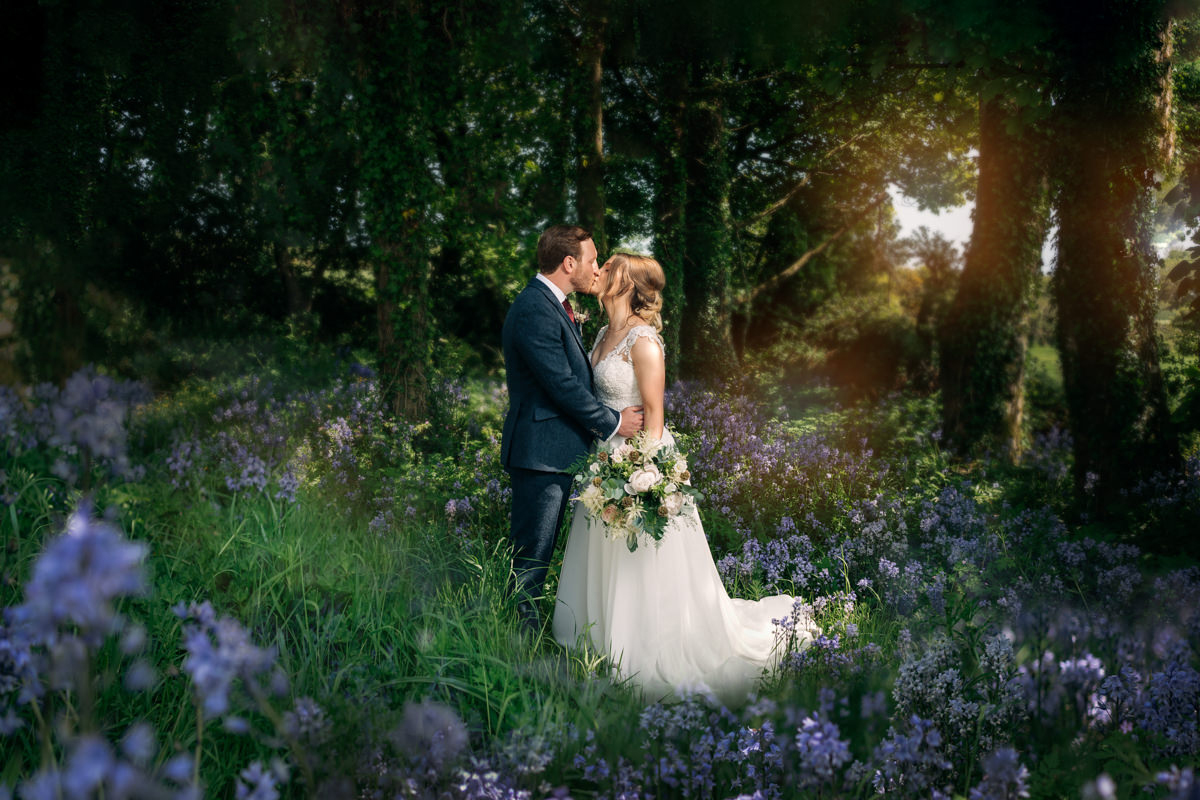
Photo by Irina Duane Photography at Ardmore, Waterford, Ireland
Lift Subjects Out of a Scene
You can overpower the sun in flash photography portraits without creating harsh shadows when you use a softbox or umbrella to modify the flash. This is a great technique to use when you want to lift your subjects out of a scene while keeping the light falling on them soft and flattering.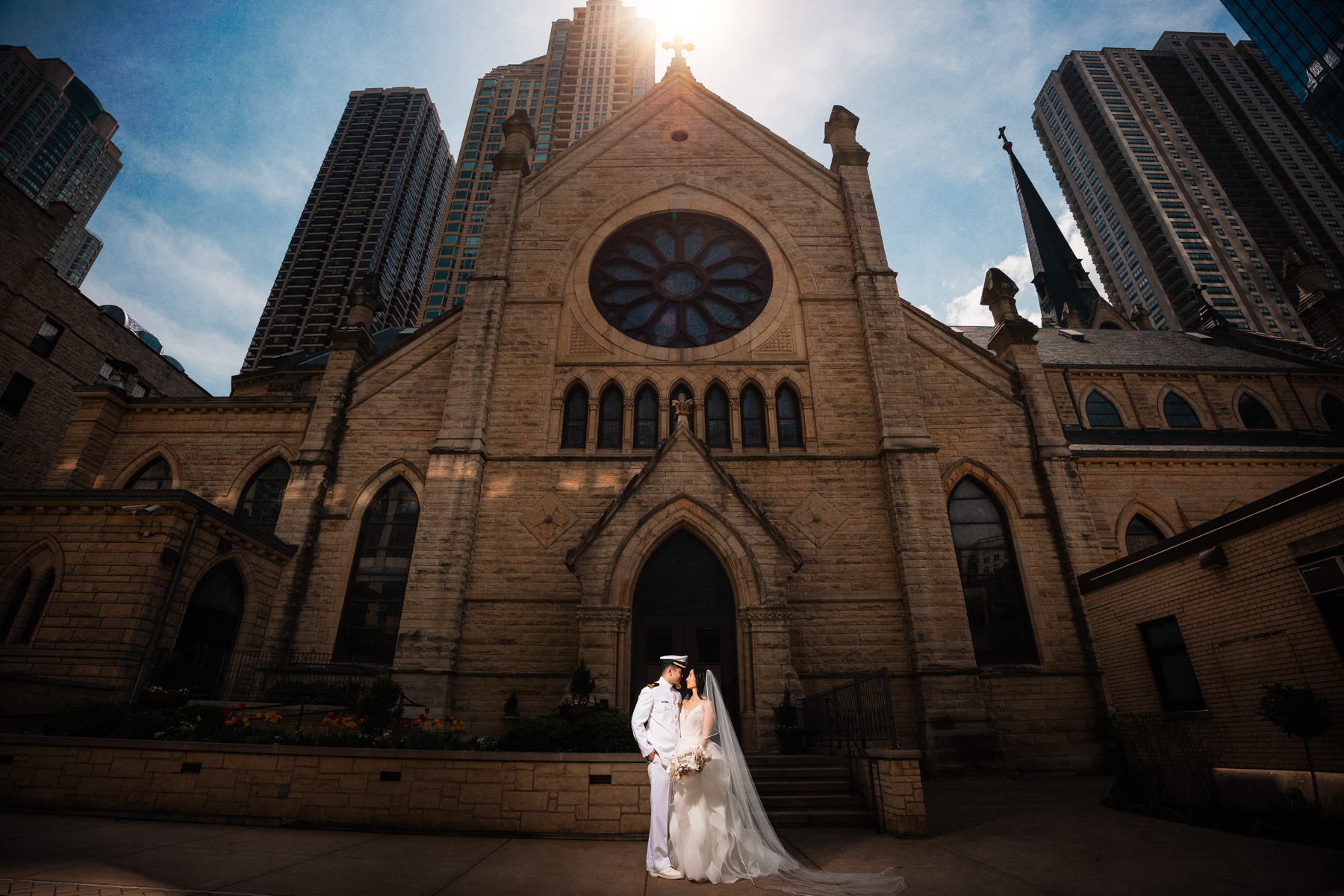
Photo by John Foley at Holy Name Cathedral, Chicago, IL, United States
First, compose your shot. Then, dial down the ambient exposure, boost the flash power (typically to 1/2 to 1/1 for basic speedlights) if you’re shooting outdoors, and have your assistant raise the flash at a slight top-down angle and off to the side. A softbox can really come in handy here to focus more of the light on your subjects and minimize light spill, especially when used with a softbox grid. All that’s left to do at this point is pose your subjects and capture the shots, ideally from a variety of angles (wide, medium, and tight) to maximize the deliverable images from this one setup.
Add Light Direction in Scenes With Flat Light
In scenes with flat, even lighting—often caused by overcast skies or shade from buildings—adding direction to your light can make a huge difference in creating depth and dimension. Using a softbox or umbrella allows you to introduce directional light that sculpts your subjects and enhances their features. A softbox, with its more focused light, is great for this, allowing you to control where the light falls and avoid unwanted spill. Umbrellas, while broader and less focused, can still add gentle direction by filling one side of the scene with light while leaving subtle shadows on the other.

Photo by Lin and Jirsa Photography
Create Moody or Editorial-Style Portraits
Softboxes and umbrellas serve as great tools for moody, editorial-style portraits. The softer transitions between light and shadows that softboxes and umbrellas produce offer a more refined look than bare flash or hard light. They can also be further modified with a grid if necessary to control the direction of the light and minimize spill.
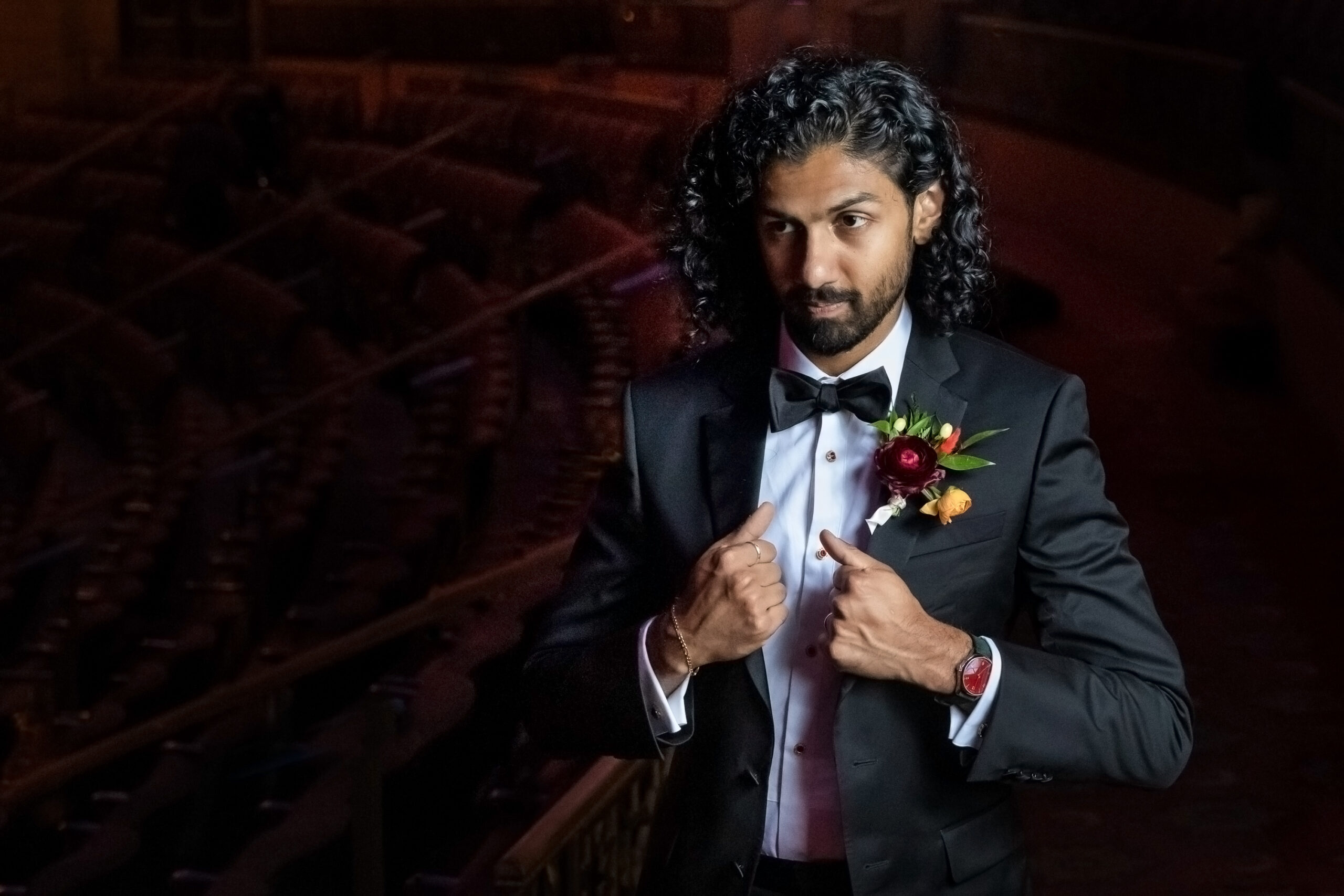
Photo by Cindy Brown Fox Theater, Atlanta, GA, United States
The photographer just needs to darken the ambient exposure enough to set the “mood” of the portrait. Then, with a well-placed and properly posed subject, softboxes and umbrellas can create specific light patterns, such as the popular Rembrandt pattern often seen in this style of portraiture. Note, it’s important to pair the subject’s expression with the mood set by the lighting as well. A mismatched cheesy grin in a dark and moody portrait can ruin the overall vibe of the shot.
Light Large Groups
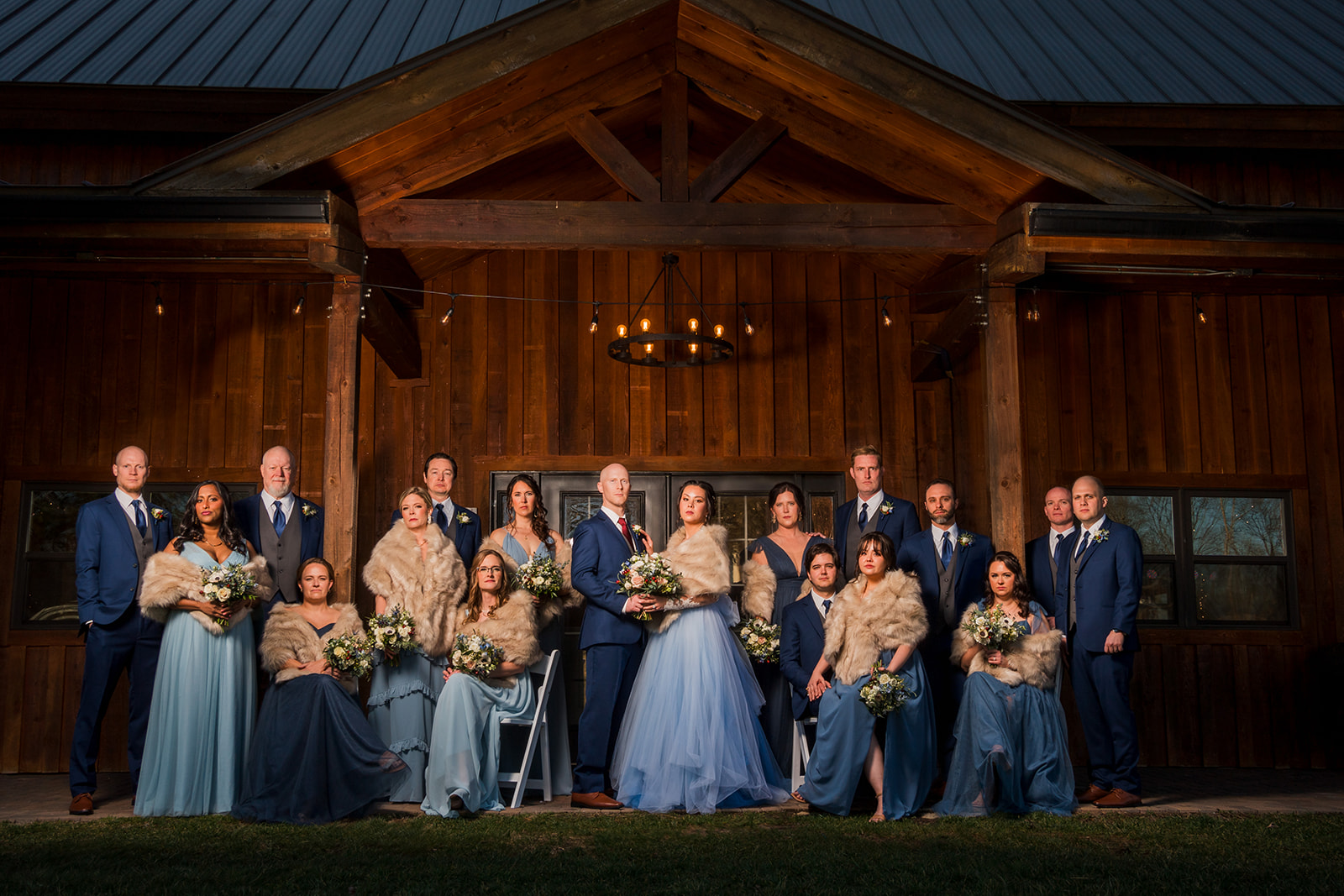
Photo by Party of Two at Pleasant Grove Farm, Charlotte, NC, USA
When it comes to lighting large groups, there are a number of ways to approach it. Ideally, you’ll use the method that is most efficient and effective for your vision. Depending on the size of the group, the subjects might be layered (standing in rows) or in a straight line. The more rows of people you have, the trickier it can be to light everyone evenly and avoid unwanted shadows. Here are some go-to solutions for minimizing these issues using one- and two-light setups.
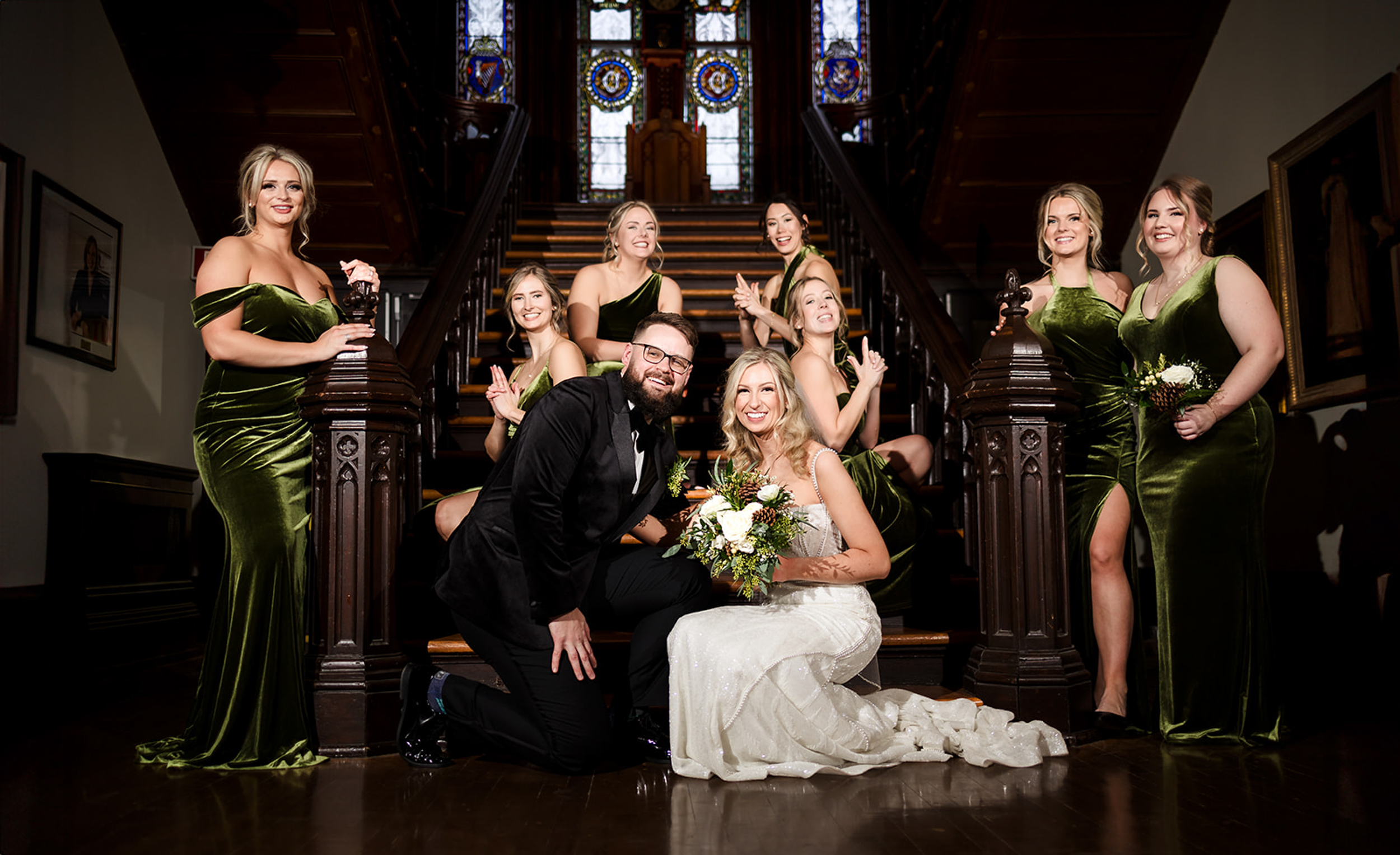
Photo by TKM Photography at Trafalger Castle School, Whitby Ontario, Canada
If you have only one light source, set it off to the side and feather the light across the group using a tall light stand, or have an assistant with a boom stand and an umbrella to modify the light. The key is to raise the light high enough so that the top-down angle pushes the shadows down more than it spreads them across the subjects. To feather the light for more evenly lit subjects, direct it toward the person farthest from the light source. Of course, if you have multiple lights, you can place one on each side of the group and follow the same instructions above.
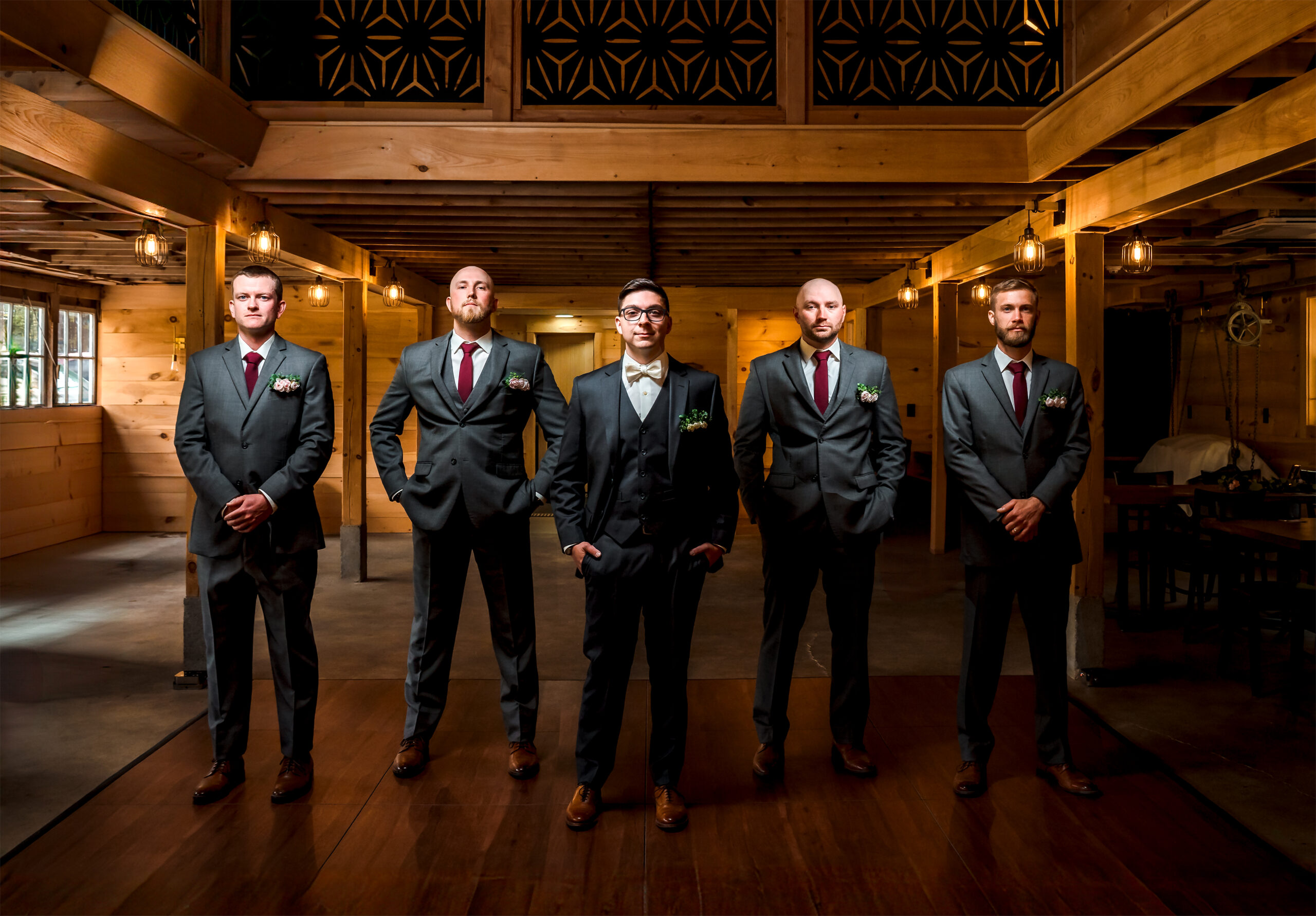
Photo by Ladman Studios at Evergreen Farms, Dayville, CT, USA
Alternatively, you can individually light your subjects and capture multiple shots to combine in post-production to create a composite image. This works well for groups of all sizes, from a line of groomsmen to a full family formal gathering, but it can be time-consuming for larger groups. Use a softbox if you want to minimize light spilling onto different subjects. Finally, be sure to place your camera on a tripod to make editing smoother.
Balance and Enhance the Colors During Sunset

Photo by Hi Shutter Photography at Duke Chapel, Durham, North Carolina, USA
Sunsets are renowned for their beautiful colors. However, they also pose a challenge when used as a backdrop for engagement and wedding portraits. The reason is that we often expose for our subjects’ skin when determining our in-camera exposure for a shot. If we do this during sunset, we’ll likely need to brighten our exposure in a way that doesn’t allow the vibrant colors in the sky to come through in the photo. Adding flash to light our subjects can help solve this issue, but we can take it a step further to create an even more beautiful portrait by introducing a softbox or umbrella to modify the light from the flash.
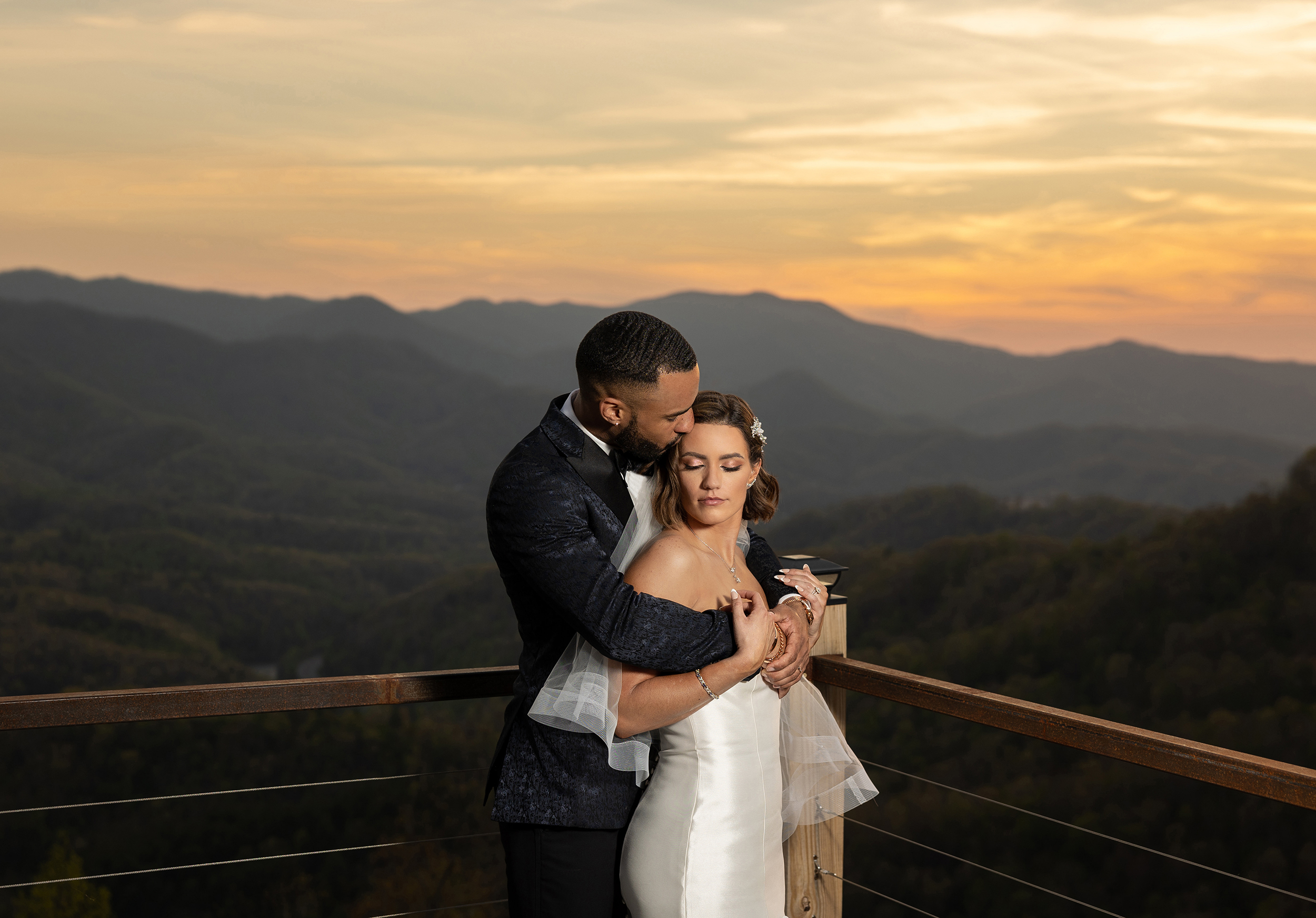
Photo by JCM Photography at The Parker Mill, Whittier, NC, United States
Whether we choose one modifier over the other depends on how much we need to control the light direction. Do we just want to light our subjects, or do we also want to light their surroundings? Should we light our subjects’ entire bodies, or just their upper bodies? The softbox will give us more directional control, while the umbrella will provide less. At the end of the day, however (a sunset pun), both will give great results.
Emphasize the Clouds
On cloudy days, both softboxes and umbrellas can be used creatively to enhance the texture of the clouds in your images. These tools allow photographers to evenly illuminate their subject while still capturing the subtleties in the cloud textures. By balancing the exposure between your subject and the sky, you can use either modifier to bring out the rich details and layers of clouds, turning an overcast day into an opportunity for stunning, atmospheric images.
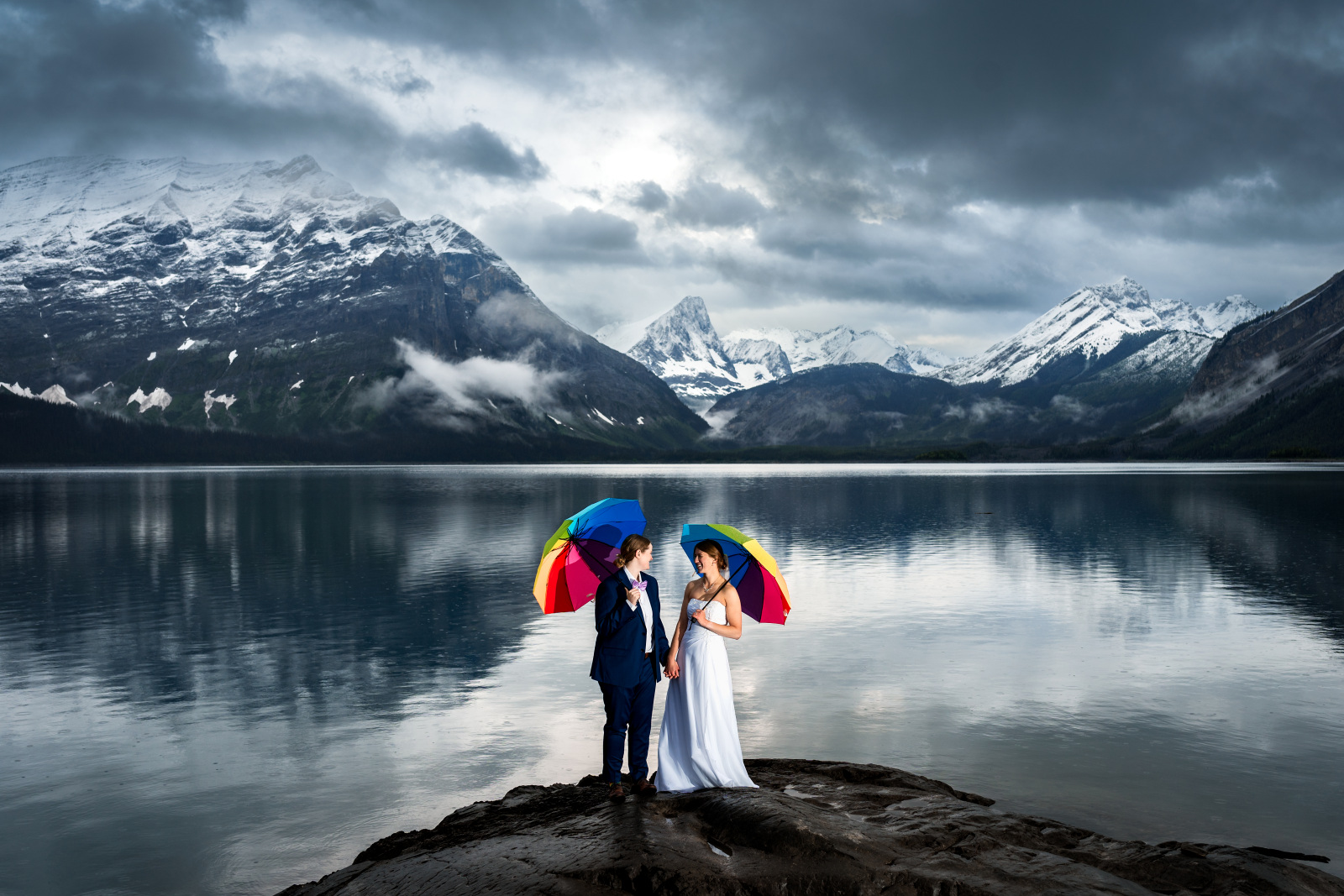
Photo by 4 Eyes Photography at Kananaskis Lake, Kananaskis, AB, Canada
Capture Night Portraits

Photo by Andy Sidders at the Danesfield House Hotel, Marlow, UK
When capturing night shots, you can pretty much expect to use flash to prevent your subjects from getting lost in the dark. Whereas a bare bulb flash will create more contrast with harder-edged shadows, placing a softbox or umbrella on the flash will make the light source appear larger and provide softer transitions between light and dark areas on your subjects. As mentioned earlier, softboxes generally provide more directional light and minimize spill compared to umbrellas, but you might actually want more of the light that umbrellas spread around to help illuminate other objects in the scene, especially if it’s particularly dark out. In some instances, you might also add a second light source, such as a backlight (typically a bare bulb speedlight or two), to provide a rim light and further separate your subjects from the dark background.
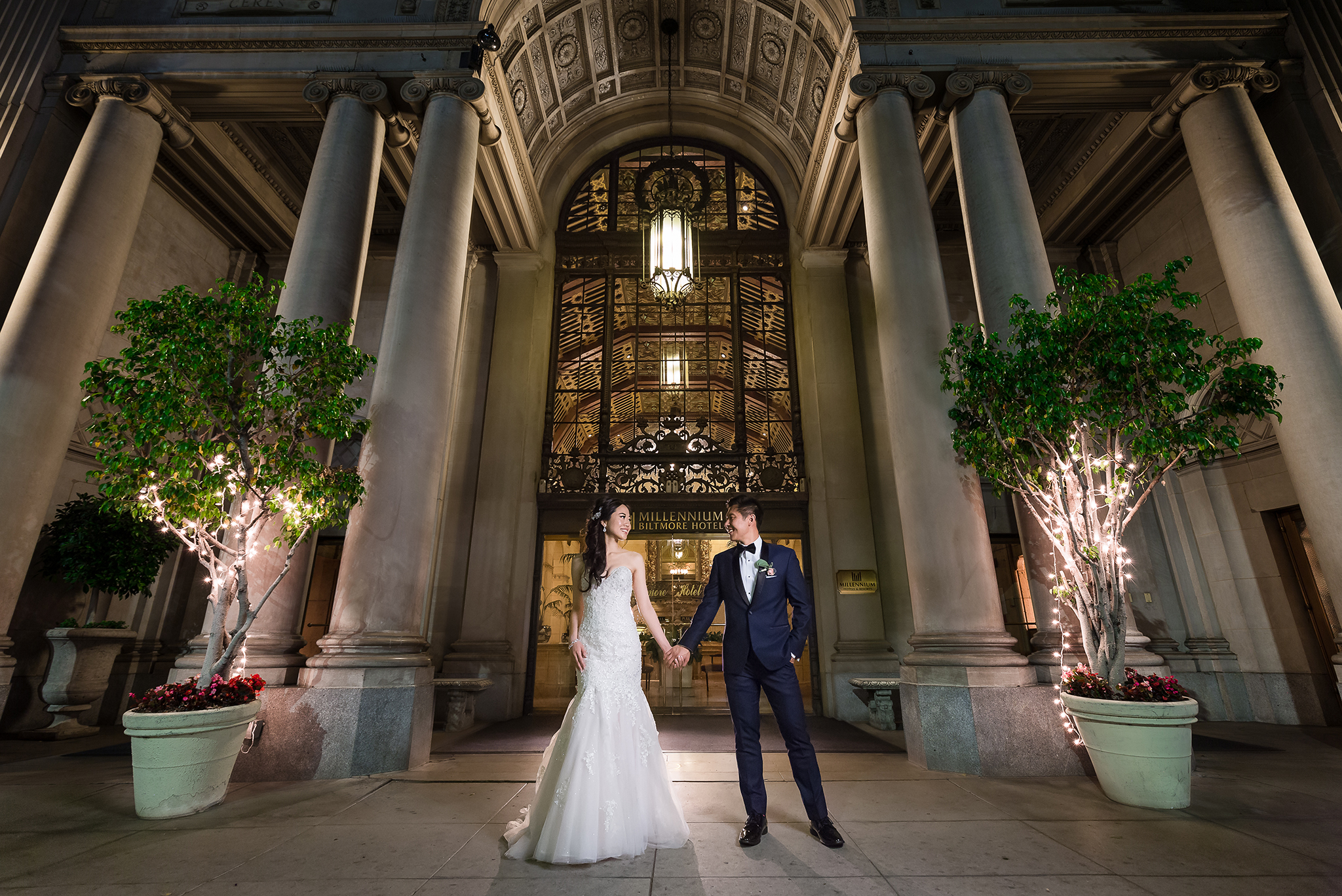
Photo by Stefani Ciotti Photography at The Biltmore, Los Angeles, CA, USA
Using a Softbox or Umbrella During Wedding Receptions
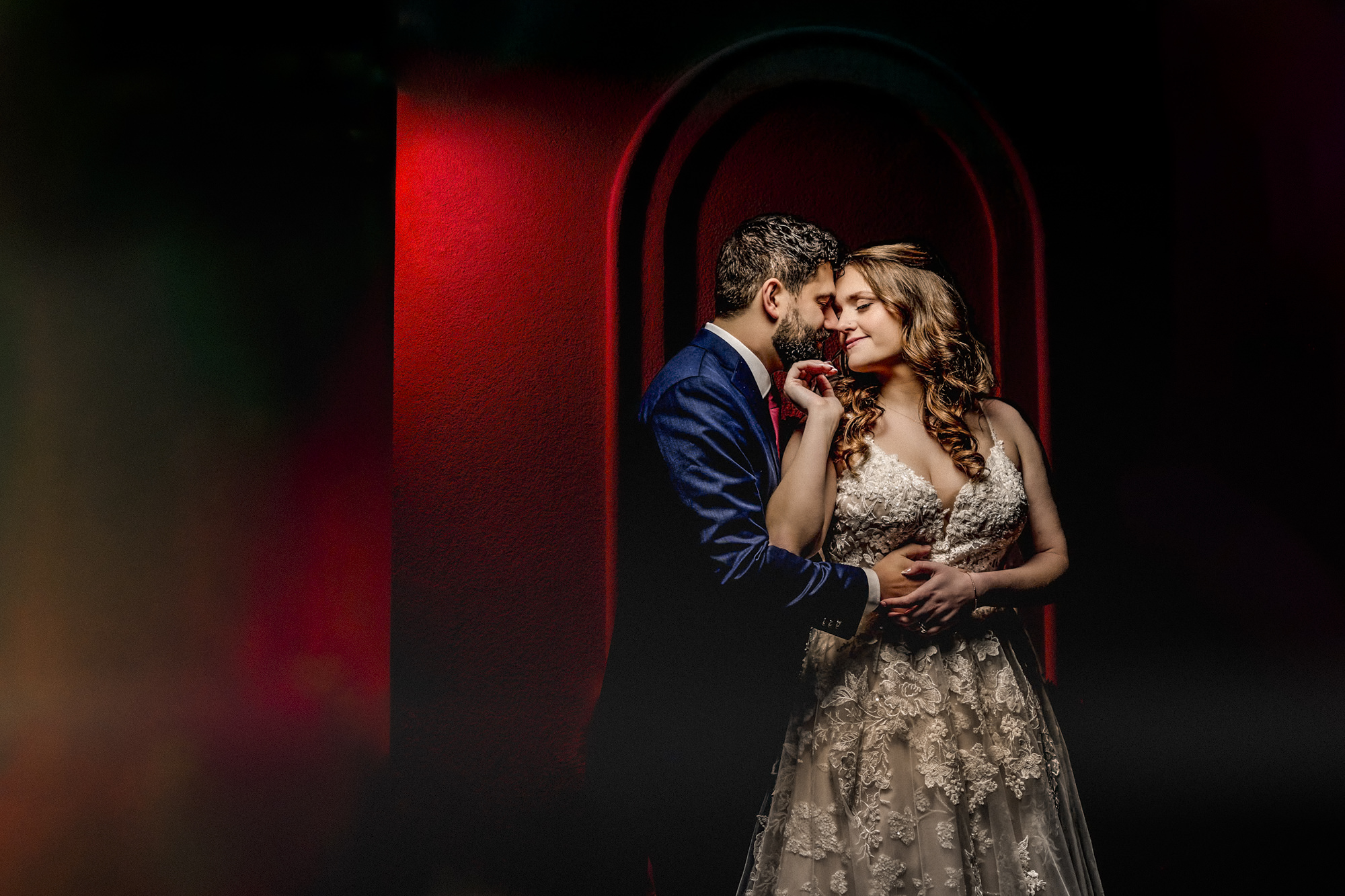
Photo by Daniel Nydick at Nanina’s in the Park, NJ, USA
Sometimes, the only thing better than one modified light is multiple modified lights, and the modifiers can come in many forms. While you will likely use a softbox (possibly gridded) or umbrella to modify the light on your subjects, you can also use a color gel on a second flash to completely transform the scene.
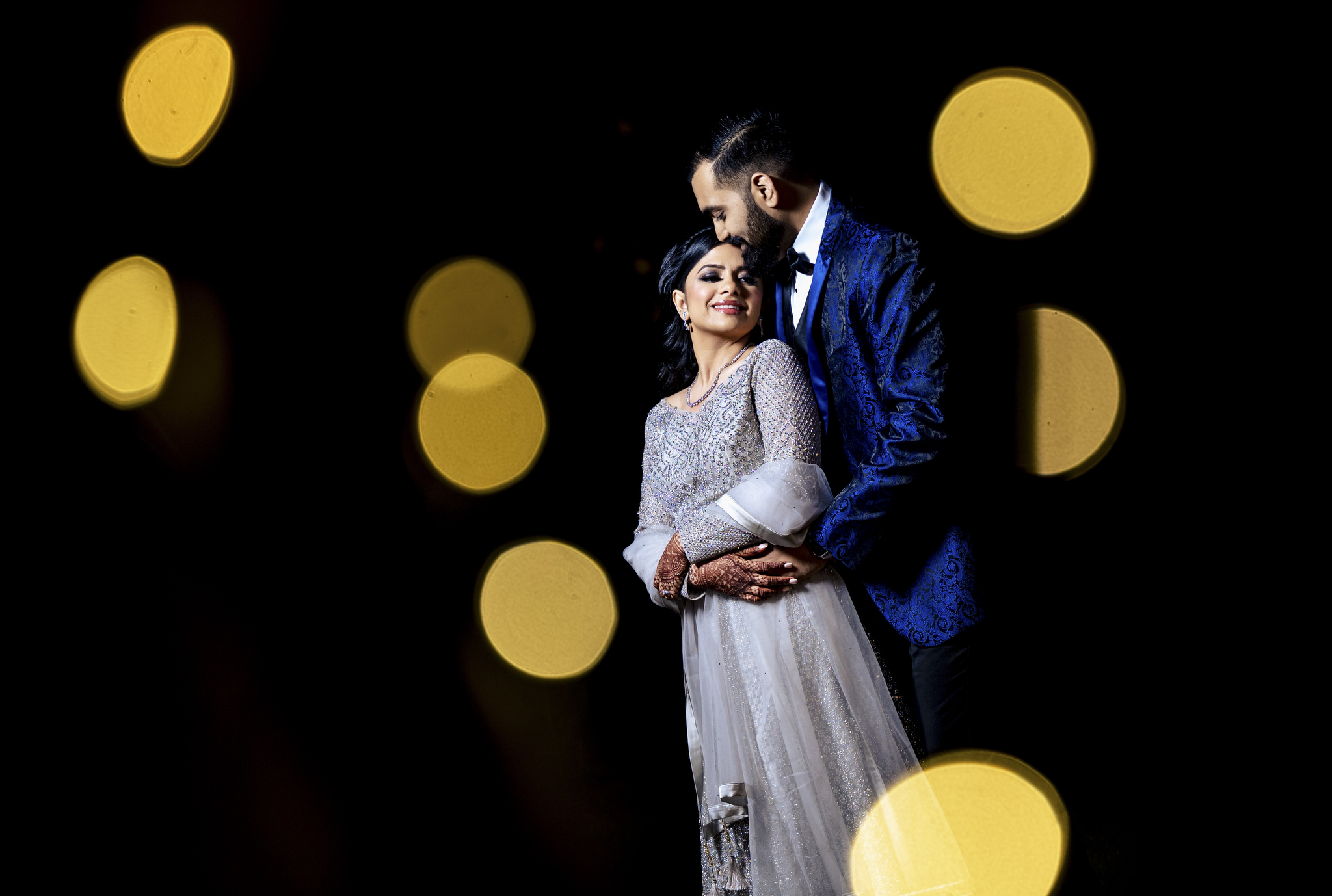
Photo by Nix Weddings at the Grandover Resort, Greensboro, NC, USA
You can also use string lights in the foreground to create a unique bokeh effect around your subjects. This technique works well when you want to conceal boring or distracting elements in a scene. Like we’ve covered in earlier tips, drop the ambient light in the scene and light your subjects with either a softbox or umbrella. Next, hold a set of string lights close to the camera and capture a variety of shots. It helps if you can place your camera on a tripod and use live view when using this technique so that you can better control the placement of the string lights.
Conclusion and More Inspiration
Please enjoy these additional photos captured with softboxes and umbrellas and refer to them again for inspiration on your next shoot.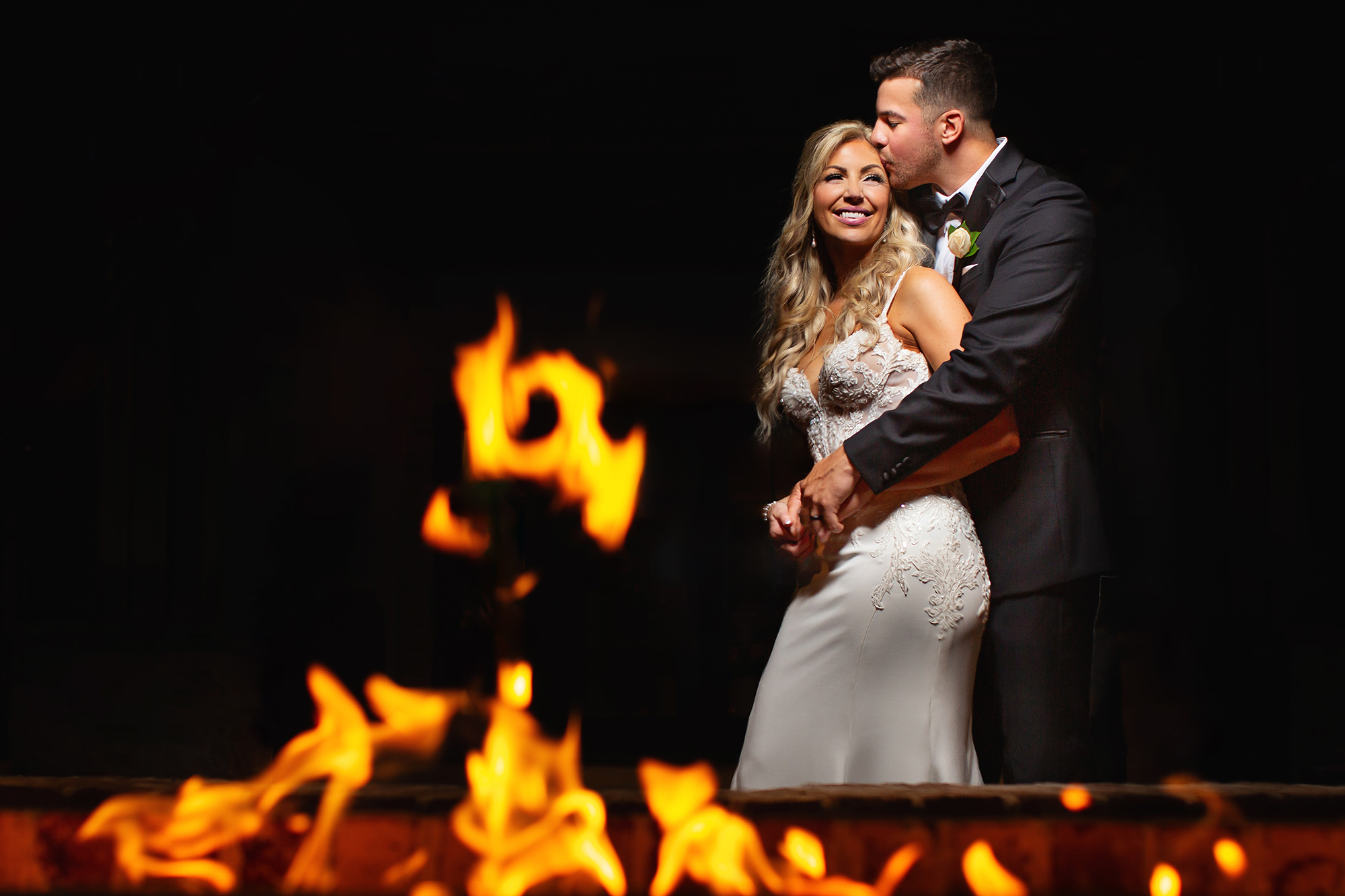
Photo by Michelle Arlotta at Perona Farms, Andover, New Jersey, United States
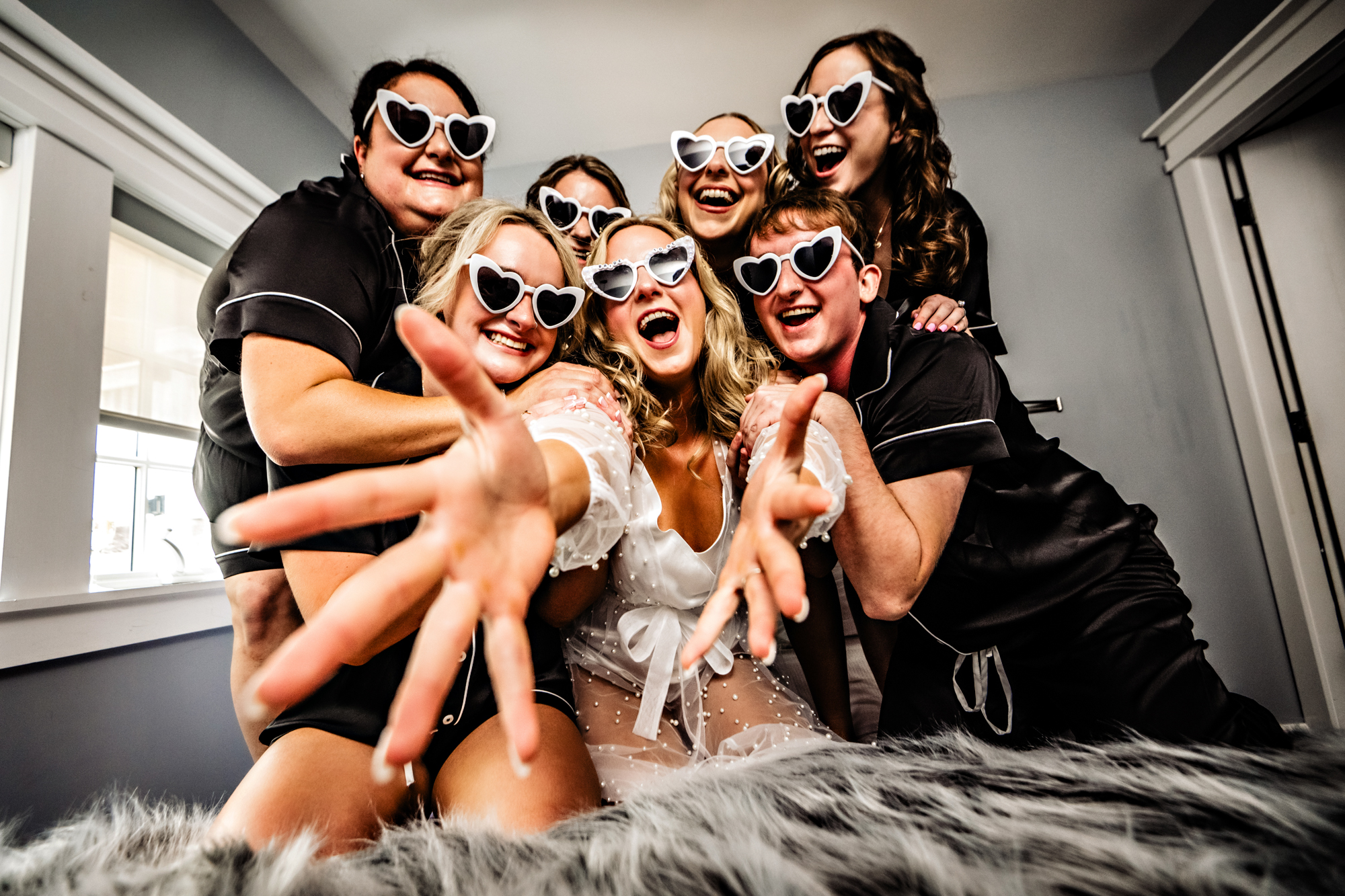
Photo by Jeff Tisman at The Ryland Inn, Whitehouse Station, NJ, United States

Photo by Milan lazic at Boba, Chicago, United States

Photo by JCM Photography at The Parker Mill, Whittier, NC, United States
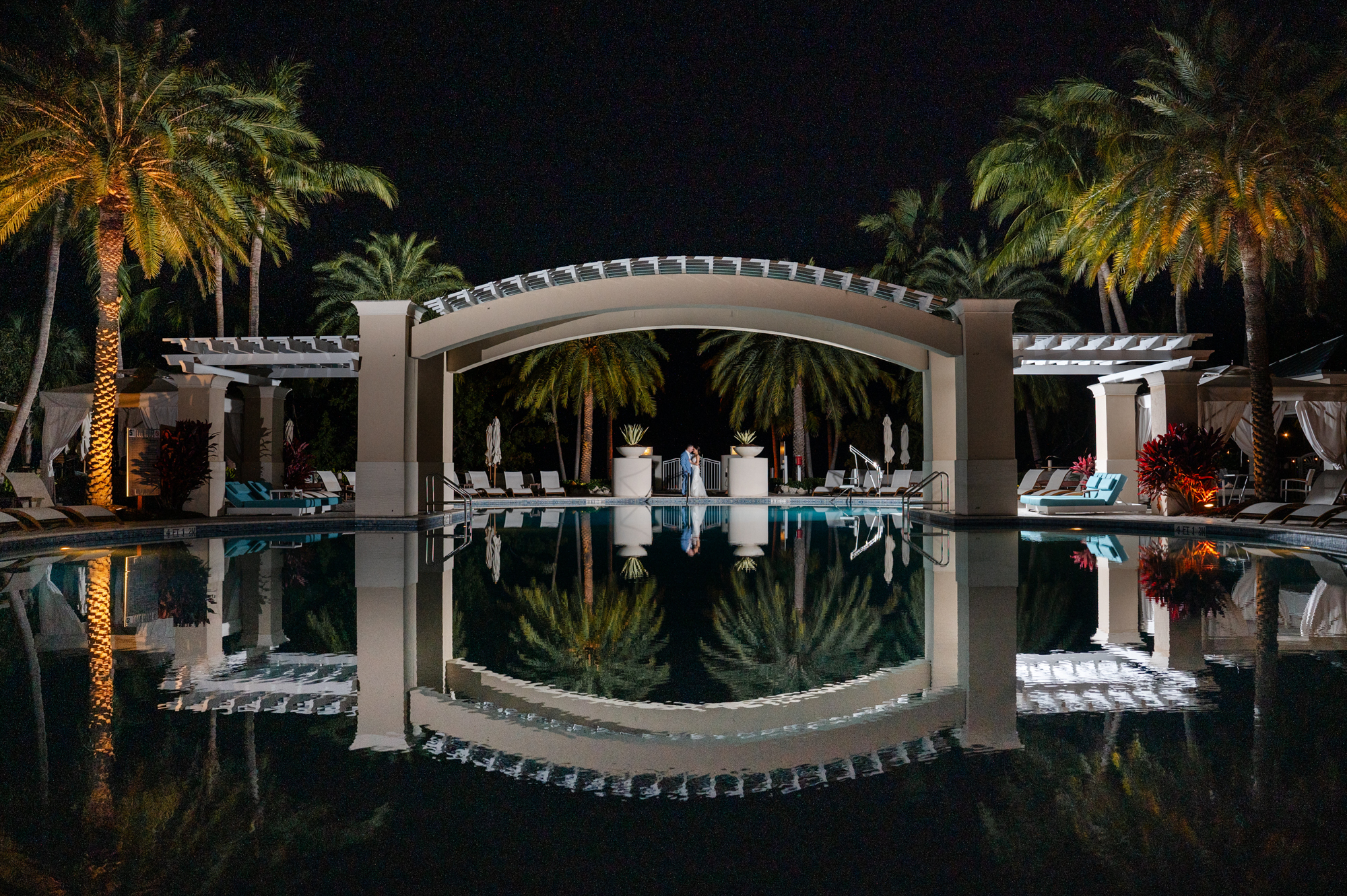
Photo by Roc Focus at Playa Largo, Key Largo, Florida, United States
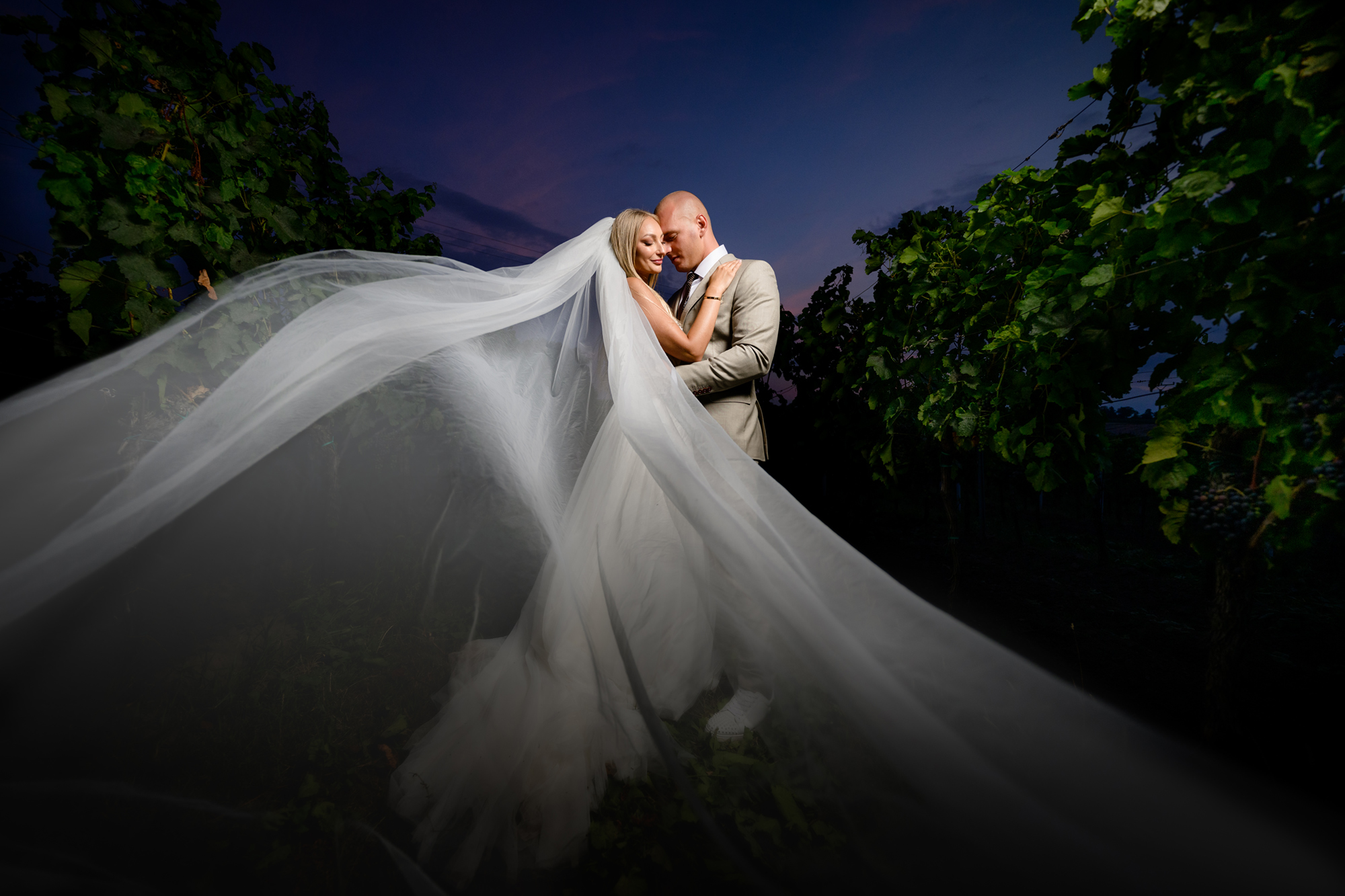
Photo by Jindrich Nejedly at Playa Largo, Key Largo, Florida, United States
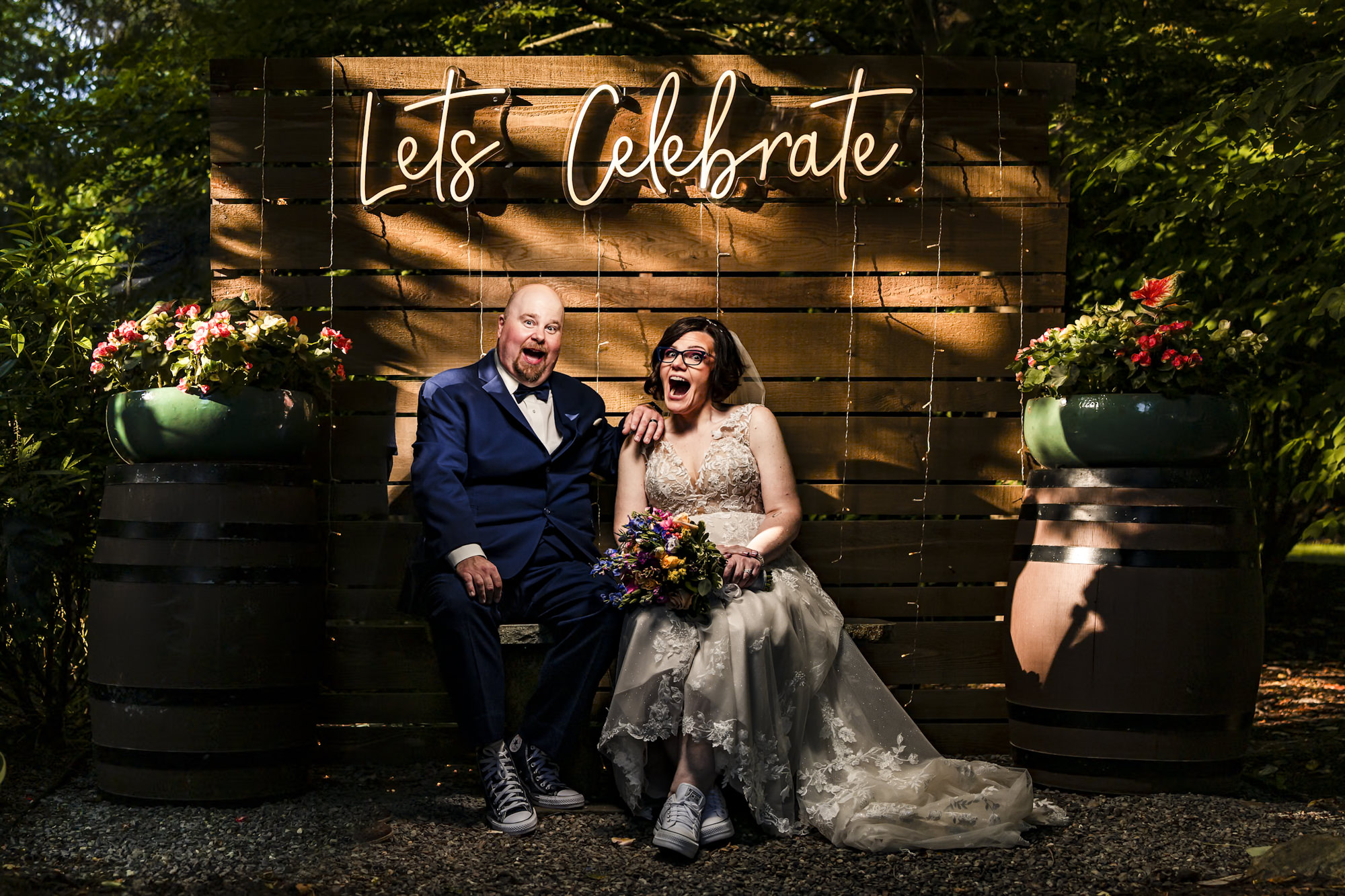
Photo by Daniel Nydick at the Olde Mill Inn, NJ, USA

Photo by Nix Weddings at the River Run Country Club, Davidson, North Carolina, USA
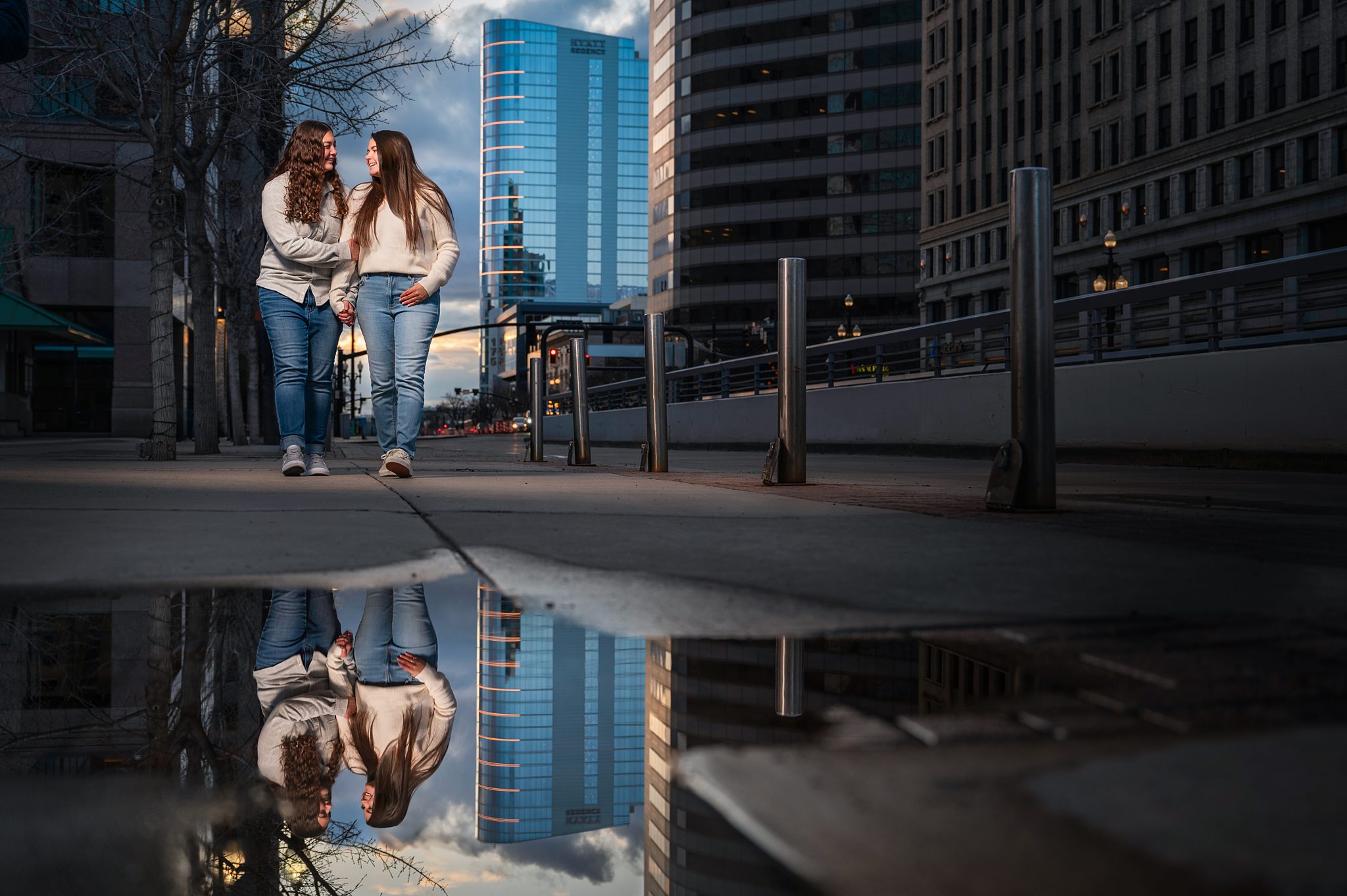
Photo by Jessie and Dallin at Downtown Salt Lake City, Utah, United States
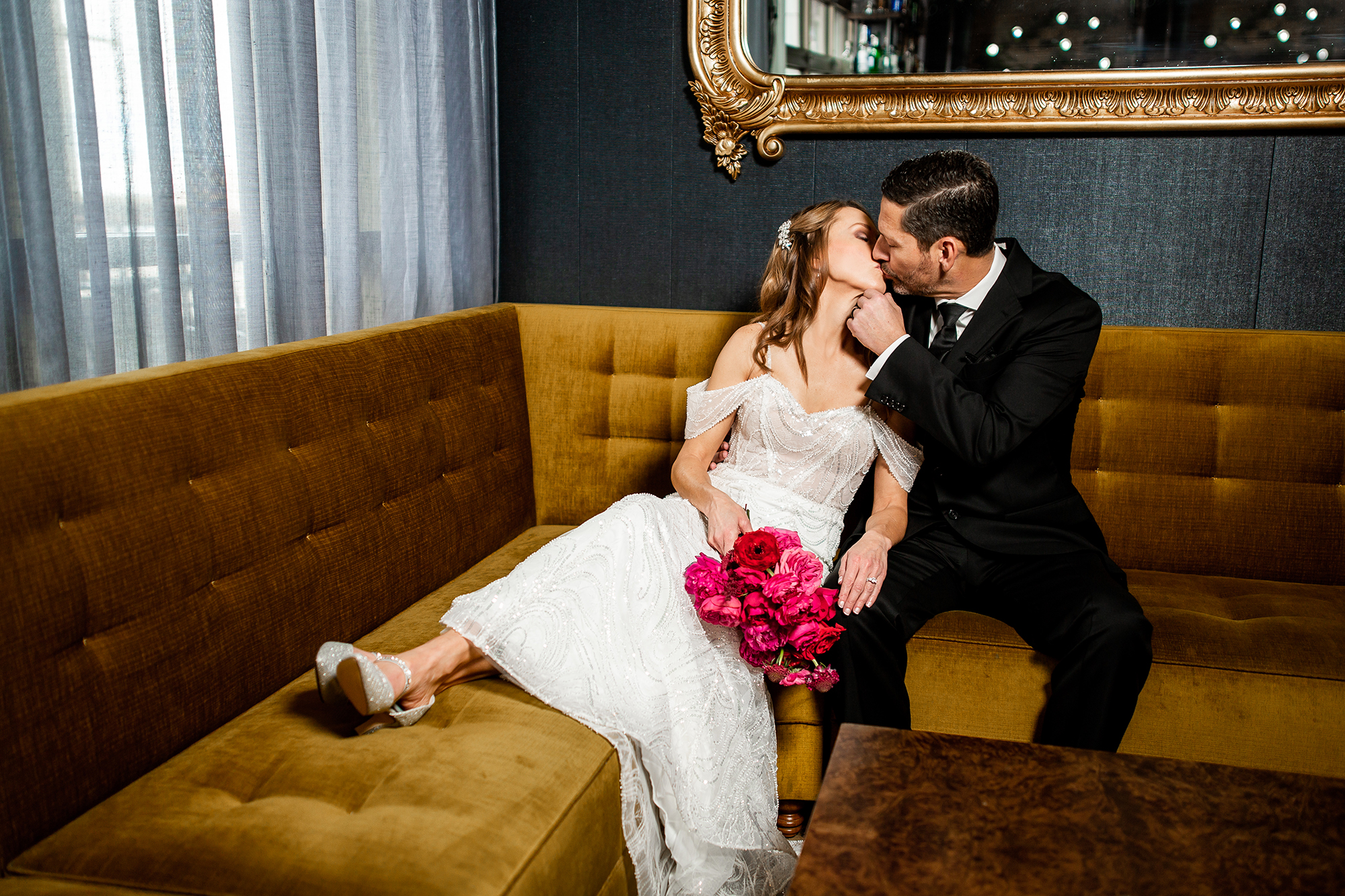
Photo by Sarah Goff Photography at The Elizabeth Hotel, Fort Collins, Colorado, United States
We hope you found these tips and ideas for enhancing wedding portraits with softboxes and umbrellas helpful. Having access to these incredible modifiers can expand our creative horizons and take our photography in new directions. That said, it’s important to shoot with intention and use these tools when it best serves the photos, not to mention our clients.

